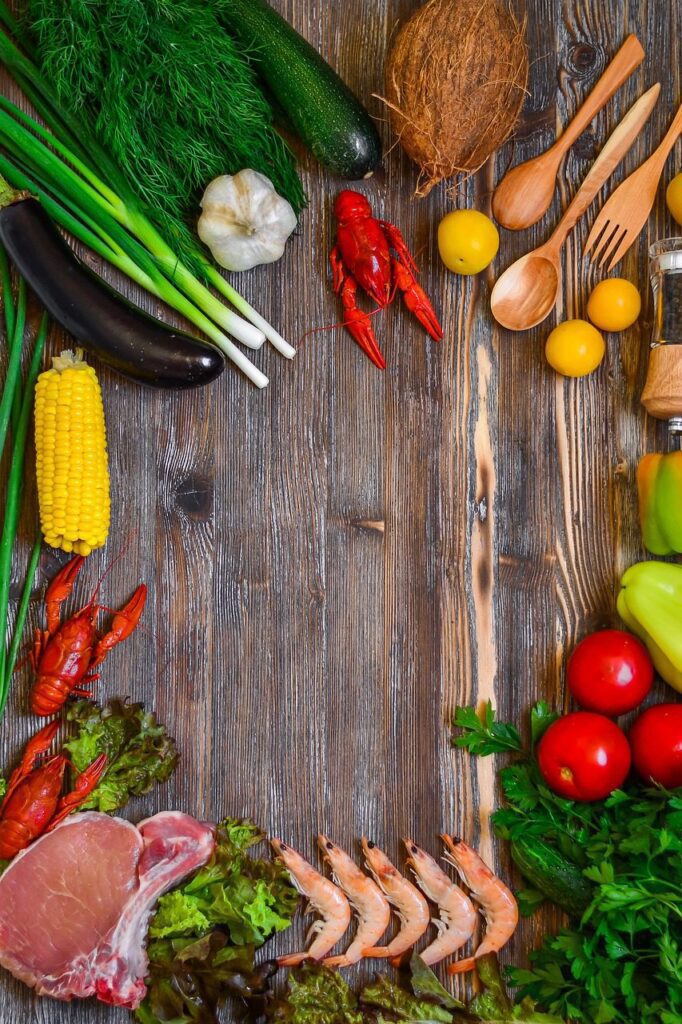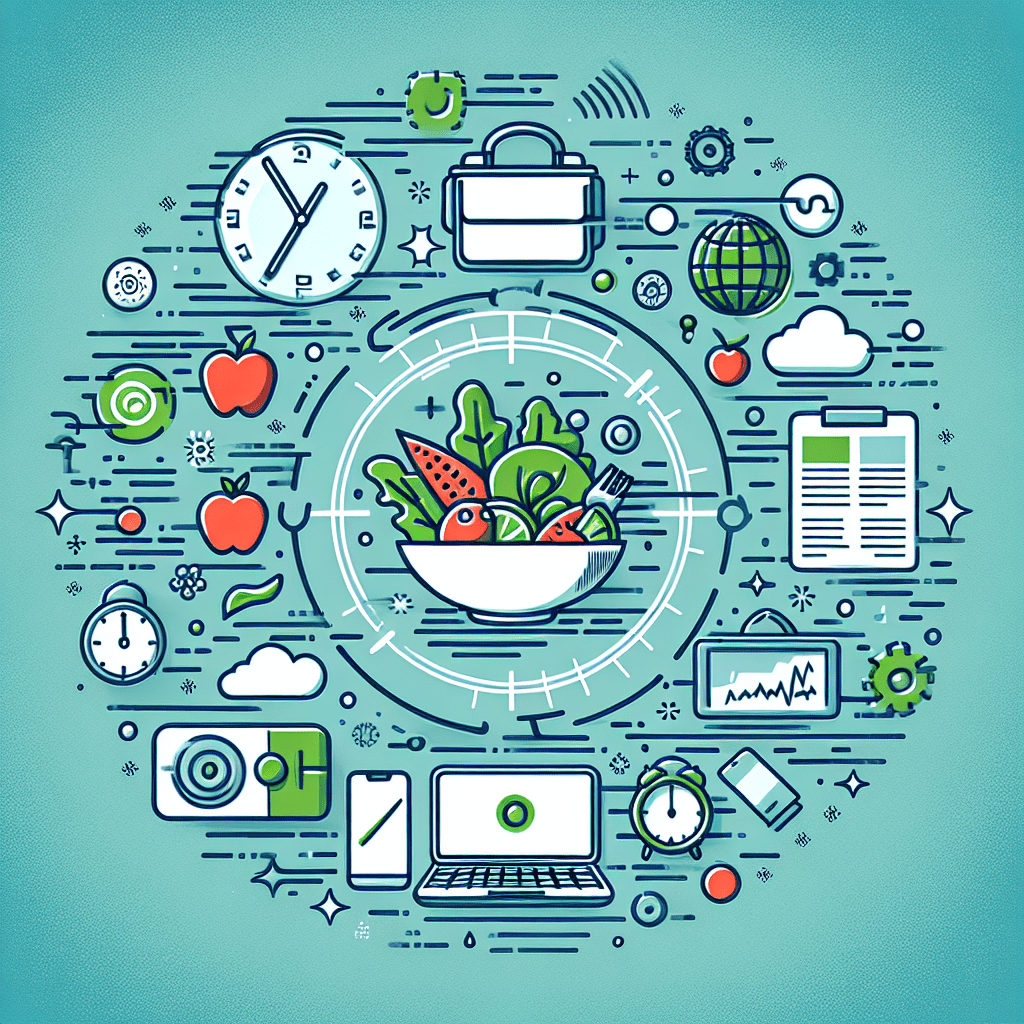Busy Bee Eats: Mastering Balanced Diets For Hectic Schedules. Are you constantly juggling a jam-packed schedule and finding it difficult to maintain a balanced diet? Fear not, because Busy Bee Eats is here to help! In this article, we will explore practical tips and tricks to master the art of nourishing your body while leading a hectic life. From quick and easy meal prep ideas to smart snacking options, we’ve got you covered. So grab your favorite snack and get ready to fuel your busy lifestyle with wholesome and delicious food!
Understanding the Importance of a Balanced Diet
What is a Balanced Diet?
A balanced diet refers to a meal plan that provides all the necessary nutrients, vitamins, and minerals in the right proportions. It involves consuming a variety of foods from different food groups, including fruits, vegetables, whole grains, lean protein, and healthy fats. This approach ensures that your body gets the fuel it needs to function optimally and maintain good health.
Benefits of a Balanced Diet
Maintaining a balanced diet offers numerous benefits for your overall well-being. Firstly, it provides you with sustained energy throughout the day, helping you stay focused and productive. Secondly, it supports a healthy weight management, reducing the risk of obesity and related health conditions. Additionally, a balanced diet strengthens your immune system and lowers the risk of chronic diseases such as heart disease, diabetes, and certain types of cancer. Lastly, it promotes mental well-being and enhances cognitive function, allowing you to think more clearly and maintain a positive mood.
Impact of Hectic Schedules on Diet
In today’s fast-paced world, it’s common for people to have hectic schedules that make it challenging to prioritize healthy eating. Busy days often lead to relying on quick and convenient food options, which are typically high in calories, unhealthy fats, and added sugars. This can result in nutrient deficiencies, energy crashes, and weight gain over time. Moreover, stress and exhaustion from a busy lifestyle can increase cravings for unhealthy comfort foods, further derailing your diet. It’s essential to recognize the impact of your schedule on your eating habits and take proactive measures to counteract these challenges.
The Role of Planning in Maintaining a Balanced Diet
Planning plays a crucial role in maintaining a balanced diet, especially for individuals with busy schedules. By taking the time to plan your meals in advance, you can ensure that you have nutritious options available and avoid making impulsive food choices. Planning also helps you save time and money by reducing food waste and unnecessary trips to the grocery store. Furthermore, it allows you to be intentional about incorporating a variety of nutrient-dense foods into your diet, ensuring that you meet your body’s nutritional needs. With proper planning, you can take control of your diet and make healthier choices even when life gets hectic.
Tips for Planning and Preparing Meals in Advance
Meal Prepping Basics
Meal prepping is a meal planning strategy where you prepare a batch of meals or ingredients in advance to be consumed throughout the week. It involves setting aside dedicated time, such as on the weekends, to cook and portion out your meals. By doing so, you eliminate the need to cook every day, saving you time and effort during busy weekdays. To get started with meal prepping, it’s essential to choose recipes that can be easily reheated or assembled quickly. Invest in quality food containers to store your prepped meals and keep track of their expiration dates to ensure freshness.
Creating a Weekly Meal Plan
A weekly meal plan serves as a roadmap for your eating habits during the week. Start by assessing your schedule and identifying the busiest days when you may need quick and easy meals. Then, plan your meals accordingly, considering a balance of nutrients and flavors. Incorporate a variety of vegetables, whole grains, and protein sources to ensure you are getting a well-rounded diet. Additionally, try to include seasonal ingredients to maximize flavor and nutritional benefits. Write down your meal plan, including breakfast, lunch, dinner, and snacks, and keep it visible in your kitchen for easy reference.

Making Grocery Lists
A well-prepared grocery list is a key component of successful meal planning. Before heading to the grocery store, take inventory of your pantry and fridge to determine which ingredients you already have on hand. Then, write down the remaining items you need for your planned meals. Organize your list by food categories or sections of the store to make shopping more efficient. This way, you can quickly navigate through the store and avoid unnecessary impulse purchases. Stick to your list to stay on budget and prevent food waste.
Batch Cooking and Freezing Meals
Batch cooking involves preparing larger quantities of food and freezing portions for future use. This technique allows you to cook once and enjoy multiple meals without sacrificing variety or nutritional value. Choose recipes that freeze well, such as soups, stews, and casseroles. Portion out the cooked meals into individual containers or freezer bags, label them with the contents and date, and store them in the freezer. When you’re short on time, simply thaw and reheat these pre-cooked meals for a quick and nutritious option.
Using Slow Cookers and Instant Pots for Easy Meals
Slow cookers and instant pots are valuable tools for busy individuals looking to save time in the kitchen. These appliances allow you to prepare flavorful and nutritious meals with minimal effort. Slow cookers are ideal for long, slow cooking processes, such as soups, stews, and roasts. Simply add your ingredients in the morning, set the desired cooking time, and return home to a delicious meal. Instant pots, on the other hand, offer the convenience of pressure cooking, sautéing, and even steaming in a single appliance. They can significantly cut down cooking times while maintaining the taste and texture of your meals.
Quick and Healthy Breakfast Ideas
Smoothies and Overnight Oats
Busy mornings often leave little time for a sit-down breakfast. Smoothies and overnight oats are quick and nutritious options that can be prepared in advance. For smoothies, blend together your favorite fruits, vegetables, plant-based milk, and a source of protein, such as Greek yogurt or protein powder. Pour the smoothie into a reusable bottle or jar for on-the-go convenience. Overnight oats involve combining rolled oats, milk or yogurt, and your choice of toppings, such as fresh berries or nuts, in a jar or container. Let the mixture sit in the refrigerator overnight, and you’ll wake up to a ready-to-eat, satisfying breakfast.
Grab-and-Go Options
When time is of the essence, grab-and-go breakfast options can save the day. Stock up on pre-packaged single-serving items like Greek yogurt cups, hard-boiled eggs, or individually wrapped cheese slices. Combine these with a piece of fruit, a handful of nuts, or a whole-grain granola bar for a complete and portable breakfast. Additionally, consider making homemade muffins or breakfast bars ahead of time and freezing them for quick and healthy breakfasts that you can grab on your way out the door.
Make-Ahead Breakfast Burritos or Wraps
If you prefer a heartier breakfast, make-ahead breakfast burritos or wraps are a great option. Prepare a batch of scrambled eggs with your choice of vegetables, cheese, and protein, such as cooked bacon or sausage crumbles. Fill tortillas with the egg mixture and wrap them tightly in foil or plastic wrap. Store them in the refrigerator or freezer, and in the morning, simply reheat in the microwave or oven for a filling and portable breakfast.
Yogurt Parfaits with Fruit and Nuts
Yogurt parfaits are not only delicious but also packed with nutrients. Layer Greek yogurt, fresh fruit, and your favorite nuts or granola in a jar or container for a balanced and satisfying breakfast. This option can easily be prepared the night before and kept refrigerated until you’re ready to enjoy it. Experiment with different combinations of fruits and toppings to keep your breakfasts exciting and full of flavor.
Packing Nutrient-Dense Lunches for Busy Days
Salads in a Jar
Salads are a fantastic way to incorporate a variety of vegetables and nutrients into your lunch. To make them more convenient for busy schedules, try preparing salads in a jar. Layer your ingredients starting with the dressing at the bottom, followed by hearty vegetables, proteins, and leafy greens. By keeping the dressing separate from the greens, you prevent sogginess and ensure a fresh and crisp salad when it’s time to eat. When you’re ready for lunch, simply shake the jar to distribute the dressing and enjoy a nutrition-packed meal.
Bento Box-style Lunches
Bento box-style lunches offer a visually appealing and well-balanced approach to packing lunches. Invest in a lunch container with divided compartments to hold different food items. Fill each compartment with a variety of foods, such as sliced fruits, vegetables, whole-grain crackers, a protein source like grilled chicken or tofu, and a small treat like dark chocolate or a homemade energy bite. This method allows you to incorporate an assortment of flavors and textures in a single, easy-to-pack container.
Wraps and Sandwiches with Whole Grains
Wraps and sandwiches are go-to options for quick and portable lunches. Opt for whole-grain bread or wraps for added fiber and nutrients. Fill them with lean protein sources like turkey, chicken, or hummus, and layer on a variety of vegetables for added crunch and freshness. To prevent sogginess, consider packing condiments separately or using ingredients with a lower moisture content. Include a side of fresh fruit, raw vegetables, or whole-grain chips to round out your lunch.
Leftovers with a Twist
Leftovers from dinner can make for excellent and fuss-free lunches. When preparing dinner, intentionally cook extra portions to have ready-made lunches for the following day. Transform these leftovers into a different meal by adding fresh ingredients or switching up the presentation. For example, turn roasted vegetables and grilled chicken into a delicious salad by tossing them with leafy greens and a tangy vinaigrette. Experiment with different combinations to keep your lunches exciting and avoid monotony.

Smart Snacking Strategies for Sustained Energy
Preparing Snack Packs
Snacks play an important role in maintaining energy levels throughout the day. Instead of relying on vending machine options or unhealthy packaged snacks, take the time to prepare your own snack packs in advance. Use portion-controlled containers or small resealable bags to pack a mix of nutritious options such as carrot sticks, cucumber slices, cherry tomatoes, and a small portion of hummus or nut butter. This way, you’ll have a healthy snack readily available whenever hunger strikes.
Nuts, Seeds, and Dried Fruit
Nuts, seeds, and dried fruit make for excellent snacks that are portable, satisfying, and packed with nutrients. Keep a variety of them on hand, such as almonds, walnuts, pumpkin seeds, sunflower seeds, and dried apricots or cranberries. Create your own trail mix by combining different nuts, seeds, and dried fruit in a resealable bag. This snack provides a good balance of healthy fats, protein, and fiber, keeping you feeling satiated and energized between meals.
Homemade Energy Bars or Bites
Store-bought energy bars are often loaded with added sugars and preservatives. Instead, try making your own homemade energy bars or bites. There are countless recipes available that use wholesome ingredients such as oats, nuts, seeds, dried fruit, and nut butter. These homemade options allow you to customize flavors and control the amount of added sweeteners. Prepare a batch on your day off and store them in the refrigerator or freezer for grab-and-go snacks throughout the week.
Veggie Sticks with Hummus
Craving something crunchy and savory? Opt for veggie sticks with hummus as a nutritious alternative to chips and dip. Slice up a variety of vegetables, such as carrots, bell peppers, celery, and cucumbers, and portion them out into snack-sized containers or bags. Pair them with a small container of hummus for a fiber-rich and satisfying snack, packed with vitamins and minerals.
Eating Well on the Go
Choosing Healthy Options at Restaurants
Eating out doesn’t have to derail your balanced diet. When dining at restaurants, be mindful of your choices. Opt for dishes that incorporate lean proteins, whole grains, and lots of vegetables. Look for keywords on the menu that indicate healthier cooking methods, such as grilled, roasted, or steamed. If possible, ask for modifications to reduce added fats or sugars. Additionally, consider splitting a larger meal with a friend or asking for a to-go box to portion out half of the meal for later.
Packing Portable Snacks for Traveling
Traveling, whether for work or leisure, often involves long periods of time away from home and limited access to healthy food options. To ensure you don’t rely solely on convenience stores or airport fast food, pack your own portable snacks. Choose snacks that are non-perishable and easy to eat on the go, such as individual packets of nuts, dried fruit, whole-grain crackers, or homemade energy bars. Having nutritious snacks readily available will help you resist the temptation of unhealthy choices while traveling.
Meal Replacement Shakes or Bars
Meal replacement shakes or bars can be a convenient option for a quick and nutritious meal on the go. These products are designed to provide a balance of macronutrients and essential vitamins and minerals. When choosing meal replacement options, look for ones that contain high-quality protein sources, healthy fats, and a moderate amount of carbohydrates. However, it’s important to note that these products should not replace whole foods in your diet entirely. They are best used in situations where a balanced meal isn’t readily available or as a temporary solution during particularly busy periods.

Incorporating Quick and Nutritious Dinners into Your Schedule
Sheet Pan Meals for Easy Cleanup
Sheet pan meals are a time-saving dinner option that requires minimal prep and cleanup. Simply toss your desired proteins, such as chicken, fish, or tofu, with a variety of vegetables on a sheet pan. Season with herbs, spices, and a drizzle of olive oil, then roast in the oven until cooked through. Sheet pan meals are versatile and can be customized to fit different flavor profiles, making them an excellent way to incorporate a variety of nutrients into your dinner.
One-Pot Wonders
One-pot meals are a lifesaver when it comes to quick and easy dinners. These dishes involve cooking all the ingredients together in a single pot or pan, resulting in minimal cleanup. Options such as soups, stews, and stir-fries are perfect for busy evenings. To make them more nutritious, include a mix of vegetables, whole grains, and lean proteins. Utilize herbs, spices, and low-sodium sauces for flavor enhancement without relying on excessive salt or added sugars.
Stir-Fries with Lean Protein and Vegetables
Stir-fries are not only delicious but also a great way to incorporate a variety of vegetables and lean proteins into your diet. Choose quick-cooking vegetables like bell peppers, broccoli, snap peas, and carrots, along with a protein source like chicken, shrimp, or tofu. Sauté them in a hot pan with a small amount of oil, garlic, and ginger, then season with low-sodium soy sauce or other Asian-inspired sauces. Serve your stir-fry over brown rice or quinoa for a filling and well-balanced dinner.
Utilizing the Freezer for Ready-to-Heat Meals
The freezer can be your best friend when it comes to busy weeknights. Utilize it to store pre-cooked or pre-prepped meals that can be quickly reheated when you’re short on time. Prepare extra portions of your favorite dishes and freeze them in individual containers. Casseroles, soups, and lasagnas are all excellent options for freezer-friendly meals. Label each container with the date and contents to keep track of what’s available. On busy nights, simply pull out a pre-made meal, thaw, and reheat for a hassle-free dinner.
Making Healthy Choices When Dining Out or Ordering In
Understanding Menu Terminology
Understanding menu terminology can help you make healthier choices when dining out or ordering in. Look for keywords that indicate healthier cooking methods, such as grilled, baked, steamed, or roasted. Avoid dishes that are described as fried, battered, or creamy, as these are often higher in unhealthy fats and calories. Additionally, pay attention to portion sizes and consider sharing an entrée or opting for a lighter appetizer as your main course.
Opting for Lighter Options
Many restaurants offer lighter menu options or healthy substitutions for popular dishes. Look for these sections on the menu to find meals that are lower in calories, unhealthy fats, and sodium. For example, choose grilled chicken over fried, opt for whole-grain or lettuce wraps instead of bread, and ask for sauce or dressing on the side to control the amount you consume. Don’t be afraid to ask your server for customization options or healthier swaps—they are usually more than willing to accommodate.
Controlling Portion Sizes
Portion sizes at restaurants are often much larger than what you would typically eat at home. To control portion sizes, consider sharing a meal with a dining companion or ask for a to-go container at the beginning of the meal and pack up half of your entrée before even starting to eat. Another strategy is to order from the appetizer or side dish sections of the menu, which typically offer smaller portions. Be mindful of your hunger cues and stop eating when you feel satisfied rather than overly full.
Mindful Eating and Enjoying Treats in Moderation
Mindful eating involves paying attention to your food and the experience of eating. Slow down and savor each bite, focusing on the taste, texture, and aroma of the food. By eating mindfully, you’re more likely to fully enjoy and appreciate your meal, ultimately leading to greater satisfaction and a reduced desire for excess. Additionally, remember that it’s okay to indulge in treats occasionally. Allow yourself to enjoy your favorite desserts or indulgent dishes in moderation, rather than completely depriving yourself. A balanced diet includes room for occasional treats, as long as they are enjoyed in a mindful and controlled manner.

Balancing Nutritional Needs with Time Constraints
Identifying Essential Nutrients
To maintain a balanced diet, it’s crucial to identify the essential nutrients your body needs. These include carbohydrates, proteins, healthy fats, vitamins, minerals, and fiber. Carbohydrates provide energy, proteins are the building blocks for body tissues, healthy fats support brain function and heart health, vitamins and minerals play vital roles in various body functions, and fiber aids digestion and promotes satiety. Understanding the importance of each nutrient helps you make informed food choices and ensure that your meals meet your body’s needs.
Preparing Meals with Balanced Macros
Macronutrients, commonly referred to as macros, are the three main components of a balanced diet: carbohydrates, proteins, and fats. Each of these macronutrients plays a crucial role in the body and has specific dietary requirements. When planning your meals, aim to include a balance of all three macros to ensure proper nutrition. This might involve incorporating whole grains, lean proteins, and healthy fats into each meal. Balance each macro based on your specific nutritional needs and activity level to optimize your diet.
Incorporating Variety and Colorful Ingredients
Incorporating a variety of foods into your diet ensures that you receive a broad spectrum of nutrients. Opt for different colors of fruits and vegetables, as the pigments represent different vitamins and minerals. For example, orange and yellow produce like carrots and bell peppers are rich in vitamin C and beta-carotene, while leafy greens like spinach and kale are excellent sources of iron and folic acid. By incorporating a rainbow of colors into your diet, you can maximize the nutritional benefits and add visual appeal to your meals.
Seeking Professional Advice or Consulting a Nutritionist
If you find it challenging to balance your nutritional needs with time constraints, it may be helpful to seek professional advice. Consulting a nutritionist or registered dietitian can provide personalized guidance tailored to your specific goals, preferences, and schedule. They can help you create a customized meal plan, identify any nutrient deficiencies, and provide strategies for overcoming obstacles that may hinder your progress. Professional support can be invaluable in helping you navigate your busy schedule while maintaining a balanced and healthy diet.
Essential Tools and Resources for Busy Bee Eats
Meal Planning Apps
Several meal planning apps are available to simplify the process of organizing your meals and grocery lists. These apps often offer features such as customizable meal plans, recipe databases, and automatic grocery list generation based on your chosen recipes. Some popular examples include Mealime, Plan to Eat, and Paprika. Explore these apps to find one that aligns with your specific needs and preferences.
Kitchen Gadgets for Quick Meal Prep
Investing in a few key kitchen gadgets can significantly streamline your meal prep process. Consider purchasing a food processor or blender for quick chopping, mixing, and pureeing. A quality chef’s knife and cutting board can also make meal prep faster and more efficient. Other useful tools include a mandoline slicer, spiralizer, and a set of measuring spoons and cups. These gadgets can help you prep ingredients in a fraction of the time it would take without them.
Online Recipe Databases and Blogs
Online recipe databases and blogs are treasure troves of inspiration and ideas for quick and healthy meals. Websites such as Epicurious, Allrecipes, and Food Network offer a vast collection of recipes to suit various dietary preferences and time constraints. Many recipe blogs also focus specifically on quick and easy meals, such as “15-minute dinners” or “30-minute meals.” Explore these resources to discover new recipes and keep your meal rotation exciting.
Local Meal Delivery Services
For those who want to delegate meal preparation entirely, local meal delivery services can be a game-changer. These services provide pre-portioned ingredients and step-by-step recipes, making it easy to create delicious meals at home without the need for extensive planning or grocery shopping. Additionally, some services offer specific dietary options, such as vegetarian, gluten-free, or dairy-free. Research local meal delivery options in your area to find one that aligns with your preferences and lifestyle.
In conclusion, maintaining a balanced diet is crucial for your overall health and well-being, even when your schedule is hectic. By understanding the importance of a balanced diet and the impact of your schedule on your eating habits, you can take proactive steps to plan and prepare meals in advance. Implementing tips such as meal prepping, creating weekly meal plans, and incorporating quick and healthy breakfast ideas can make a significant difference in your diet. Additionally, packing nutrient-dense lunches, adopting smart snacking strategies, and making wise choices when dining out or ordering in can help you sustain your energy levels and make healthier choices. Balancing nutritional needs with time constraints requires identifying essential nutrients, preparing meals with balanced macros, incorporating variety and colorful ingredients, and seeking professional advice when necessary. By utilizing essential tools and resources such as meal planning apps, kitchen gadgets, online recipe databases, and local meal delivery services, you can overcome the challenges of a hectic schedule and master a balanced diet that fits your lifestyle. Remember, with a little planning and preparation, you can nourish your body and achieve optimal health even on the busiest of days.

